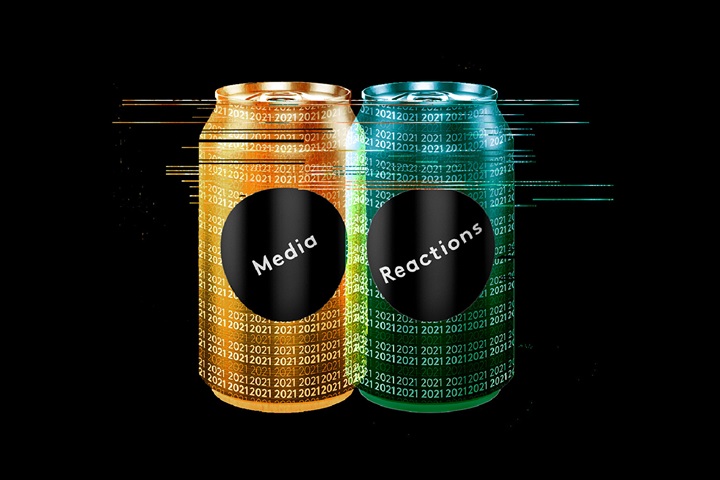With the pandemic adding uncertainty for marketers, it’s more important than ever to understand the media landscape. Findings from Kantar’s inaugural Media Reactions 2020 study reveal that marketers lack the understanding and the data they think they need. Nearly half of marketers (48%) — a growing proportion — feel that they don’t have all the data they need to make decisions in their roles. The research also finds that two-thirds are worried about the future and think that an inability to track digital media via cookies will dramatically disrupt the industry — a situation that could further impede marketers’ ability to monitor advertising effectiveness.
Media Reactions 2020 is the industry’s first equity evaluation of a selection of global media channels and brands among both consumers and marketers, based on surveys of 4,000 consumers across seven major media markets, and over 700 interviews with marketers worldwide. The study combines two legacy Kantar studies: AdReaction and Getting Media Right, to provide a robust comparison between consumer attitudes towards, and evaluations of, advertising channels, formats and brands, to those of advertisers, agency and media owners. Research insights focus on key differences of opinion between the two, to highlight gaps that can inform future advertising investment and media innovation initiatives.
Marketers under leverage the media context
The “Media Reactions: Insights to Act On” marketer’s supplement showcases insights and implications for advertisers, agencies and media companies. The following key insights demonstrate systemic challenges that may be exacerbated by the pandemic. Firstly, while marketers’ overall confidence in balancing online and offline media has increased since 2019, advertisers’ confidence has decreased by seven percentage points (7%) over the year, perhaps as a result of challenges presented by COVID-19.
Encouragingly, 72% of marketers feel they have a better grasp on the impact of context on creative effectiveness, compared to last year. However, fewer marketers (60%) are actually tailoring creative executions to fully capitalise on these contextual differences. These findings suggest that marketers are hampered in taking actions that would benefit their brands.
Lack of research could hamper brand equity and sales growth
Marketers have fewer insights than last year: over four in ten of all marketers (42%) are doing only ‘a little’ or ‘no’ creative ad testing, with cost and speed cited as the main barriers. This is unsurprising, considering that 60% of marketers have reduced their marketing spend overall in the 2020 reporting period and 30% have reduced it considerably, according to the Kantar Global Business Compass. The huge shifts in media consumption during the initial stages of the pandemic have now tailed off, but advertising has not kept pace with changing consumer media consumption patterns, and as a result, does not fully capitalise on the opportunities. Marketers will need to ensure they have access to the right data and insights about their campaign effectiveness, to ensure they are honing their media spends to the right channels, and therefore delivering better sales and brand return.
Planning for 2021
Marketers do, however, remain optimistic for the future. Although they don’t feel they have sufficient data for proper decision-making, their confidence in their ability to transform and integrate what data they do have into actionable insight has grown by +11 percentage points from last year, to 60%.
Their biggest concerns remain centred around the potential for a cookieless future, where the ability to track online ad exposure is diminished, potentially compromising effectiveness measurement. The most concerned are publishers: two-thirds of them (64%) are concerned about the impact of a cookieless world, compared to just over half (52%) last year – implying that they have not yet fully thought through the impact to their own commercial businesses.
Intended media budget allocation in 2021
What does 2021 look like from a marketers’ perspective? They intend to dedicate more of their 2021 budgets to online channels, such as online video ads and advertising in social media stories. The report shows clearly that there are anticipated increases in spending on all online channels, including branded content by online influencers, ads on streaming TV services and podcasts. All these channels are driven by data, and produce it in abundance, so it’s vital that marketers harness all the first party and third party data sources and understand their relevance to driving campaign effectiveness.
It is anticipated that print media such as newspapers and magazines will continue their declines, although at a slower rate than during the earlier stages of the pandemic. Marketers report that they expect to spend less in Print, OOH, events and cinema in 2021. The media world is fast becoming even more digital.
While gaining an accurate global perspective can be difficult in the face of ongoing industry changes, media controversy and rapidly changing consumer attitudes, Media Reactions 2020 provides a comprehensive perspective for marketers looking to better understand the current and future media landscape. Keeping a close tab on the use of data and the understanding of media effectiveness is more important than ever. And brands that invest in an accurate understanding of shifting consumer attitudes towards media channels and brands, alongside their own biases and shifting consumption patterns, will chart a path to growth in the future.
To find our more, watch our on demand webinar or download our complementary summary. And get in touch to find out about the in depth reports available for sale.


